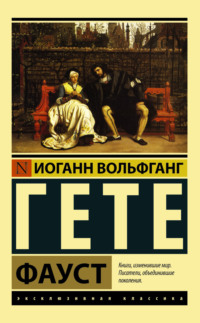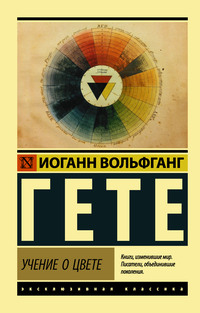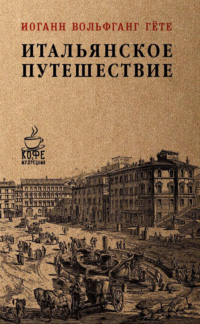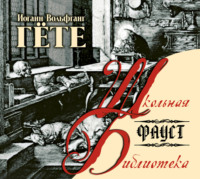
Letters from Switzerland and Travels in Italy
The columns are all standing; two which had fallen, have very recently been raised again. How far the columns rested on a socle is hard to say; and without an engraving it is difficult to give an idea of their present state. At some points it would seem as if the pillars rested on the fourth step. In that ease to enter the temple you would have to go down a step. In other places, however, the uppermost step is cut through, and then it looks as if the columns had rested on bases; and then again these spaces have been filled up, and so we have once more the first case. An architect is necessary to determine this point.
The sides have twelve columns, not reckoning the corner ones; the back and front six, including them. The rollers on which the stones were moved along, still lie around you on the steps. They have been left in order to indicate that the temple was unfinished. But the strongest evidence of this fact is the floor. In some spots (along the sides) the pavement is laid flown, in the middle, however, the red limestone rock still projects higher than the level of the floor as partially laid; the flooring, therefore, cannot ever have been finished. There is also no trace of an inner temple. Still less can the temple have ever been overlaid with stucco; but that it was intended to do so, we may infer from the fact that the abaci of the capitals have projecting points probably for the purpose of holding the plaster. The whole is built of a limestone, very similar to the travertine; only it is now much fretted. The restoration which was carried on in 1781, has done much good to the building. The cutting of the stone, with which the parts have been reconnected, is simple, but beautiful. The large blocks standing by themselves, which are mentioned by Riedesel, I could not find; probably they were used for the restoration of the columns.
The site of the temple is singular; at the highest end of a broad and long valley, it stands on an isolated hill. Surrounded, however, on all sides by cliffs, it commands a very distant and extensive view of the land, but takes in only just a corner of the sea. The district reposes in a sort of melancholy fertility – every where well cultivated, but scarce a dwelling to be seen. Flowering thistles were swarming with countless butterflies, wild fennel stood here from eight to nine feet high, dry and withered of the last year's growth, but so rich and in such seeming order that one might almost take it to be an old nursery-ground. A shrill wind whistled through the columns as if through a wood, and screaming birds of prey hovered around the pediments.
The wearisomeness of winding through the insignificant ruins of a theatre took away from us all the pleasures we might otherwise have had in visiting the remains of the ancient city. At the foot of the temple, we found large pieces of the horn-stone. Indeed, the road to Alcamo is composed of vast quantities of pebbles of the same formation. From the road a portion of a gravelly earth passes into the soil, by which means it is rendered looser. In some fennel of this year's growth, I observed the difference of the lower and upper leaves; it is still the same organisation that develops multiplicity out of unity. They are most industrious weeders in these parts. Just as beaters go through a wood for game, so here they go through the fields weeding. I have actually seen some insects here. In Palermo, however, I saw nothing but worms, lizards, leeches, and snakes, though not more finely coloured than with us – indeed, they are mostly all gray.
Castel Vetrano,Saturday, April 21, 1787.
From Alcamo to Castel Vetrano you come on the limestone, after crossing some hills of gravel. Between precipitous and barren limestone mountains, lie wide undulating valleys, everywhere tilled, with scarcely a tree to be seen. The gravelly hills are full of large bolders, giving signs of ancient inundations of the sea. The soil is better mixed and lighter than any we have hitherto seen, in consequence of its containing some sand. Leaving Salemi about fifteen miles to our right, we came upon hills of gypsum, lying on the limestone. The soil appears, as we proceed, to be better and more richly compounded. In the distance you catch a peep of the Western sea. In the foreground the country is everywhere hilly. We found the fig-trees just budding, but what most excited our delight and wonder was endless masses of flowers, which had encroached on the broad road, and flourish in large variegated patches. Closely bordering on each other, the several sorts, nevertheless, keep themselves apart and recur at regular intervals. The most beautiful convolvuluses, hibiscuses, and mallows, various kinds of trefoil, here and there the garlic, and the galega-gestrauche. On horseback you may ride through this varied tapestry, by following the numberless and ever-crossing narrow paths which run through it. Here and there you see feeding fine red-brown cattle, very clean-limbed and with short horns of an extremely elegant form.
The mountains to the north-east stand all in a line. A single peak, Cuniglione, rises boldly from the midst of them. The gravelly hills have but few streams; very little rain seems to fall here; we did not find a single gully giving evidence of having ever overflowed.
In the night I met with a singular incident. Quite worn out, we had thrown ourselves on our beds in anything but a very elegant room. In the middle of the night I saw above me a most agreeable phenomenon – a star brighter, I think, than I ever saw one before. Just, however, as I began to take courage at a sight which was of good omen, my patron star suddenly disappeared, and left me in darkness again. At daybreak, I at last discovered the cause of the marvel: there was a hole in the roof, and at the moment of my vision one of the brightest stars must have been crossing my meridian. This purely natural phenomenon was, however, interpreted by us travellers as highly favourable.
Sciacca, April 22, 1787.
Sicily – Sciacca
The road hither, which runs over nothing but gravelly hills, has been mineralogically uninteresting. The traveller here reaches the shore from which, at different points, bold limestone rocks rise suddenly. All the flat land is extremely fertile; barley and oats in the finest condition; the salsola-kali is here cultivated; the aloes since yesterday, and the day before, have shot forth their tall spikes. The same numerous varieties of the trefoil still attended us. At last we came on a little wood, thick with brushwood, the tall trees standing very wide apart; – the cork-tree at last!
Girgenti, April 23, 1787. Evening.
From Sciacca to this place is a hard day's ride. We examined the baths at the last named place. A hot stream burst from the rock with a strong smell of sulphur; the water had a strong saline flavour, but it was not at all thick. May not the sulphureous exhalation be formed at the moment of its breaking from the rock? A little higher is a spring, quite cool and without smell; right above is the monastery, where are the vapour baths; a thick mist rises above it into the pure air.
The shingles on the shore are nothing but limestone: the quartz and hornstone have wholly disappeared. I have examined all the little streams: the Calta Bellota, and the Maccasoli, carry down with them nothing but limestone; the Platani, a yellow marble and flint, the invariable companion of this nobler calcareous formation. A few pieces of lava excited my attention, but I saw nothing in this country that indicated the presence of volcanic action. I supposed, therefore, they must be fragments of millstones, or of pieces brought from a distance for some such use or other. Near Monte Allegro, the stone is all gypsum and selenite; whole rocks of these occurring before and between the limestone. The wonderful strata of Calta Bellota!
Girgenti, Tuesday, April 24, 1787.
Such a glorious spring view as we enjoyed at sunset to-day will most assuredly never meet our eyes again in one life-time. Modern Girgenti stands on the lofty site of the ancient fortifications, an extent sufficient for the present population. From our window we looked over the broad but gentle declivity, on which stood the ancient town, which is now entirely covered with gardens and vineyards, beneath whose verdure it would be long before one thought of looking for the quarters of an ancient city. However, towards the southern end of this green and flourishing spot the Temple of Concord rears itself, while on the east are a few remains of the Temple of Juno. Other ruins of some ancient buildings, which lying in a straight line with those already spoken of, are scarcely noticed by the eye from above, while it hurries over them southwards to the shore, or ranges over the level country, which reaches at least seven miles from the sea-mark. To-day we were obliged to deny ourselves the pleasure of a stroll among the trees and the wild rockets and over this region, so green, so flourishing, and so full of promise for the husbandman, because our guide, (a good-natured little parish priest,) begged us before all things to devote this day to the town.
Sicily-Girgenti
He first showed us the well-built streets; then he took us to the higher points, from which the view, gaining both in extent and breadth, was still more glorious, and lastly, for an artistic treat, conducted us to the principal church. In it there is an ancient sarcophagus in good preservation. The fact of its being used for the altar has rescued from destruction the sculptures on it – Hippolytus attended by his hunting companions and horses, has just been stopped by Phædra's nurse, who wishes to deliver him a letter. As in this piece the principal object was to exhibit beautiful youthful forms, the old woman as a mere subordinate personage, is represented very little and almost dwarfish, in order not to disturb the intended effect. Of all the alto-relivoes I have ever seen, I do not, I think, remember one more glorious, and at the same time, so well preserved as this. Until I meet with a better it must pass with me as a specimen of the most graceful period of Grecian art.
We were carried back to still earlier periods of art by the examination of a costly vase of considerable size, and in excellent condition. Moreover, many relics of ancient architecture appeared worked up here and there in the walls of the modern church.
As there is no inn or hotel in this place, a kind and worthy family made room for us, and gave up for our accommodation an alcove belonging to a large room. A green curtain separated us and our baggage from the members of the family, who, in the more spacious apartment were employed in preparing macaroni, of the whitest and smallest kind. I sat down by the side of the pretty children, and caused the whole process to be explained to me, and was informed that it is prepared from the finest and hardest wheat, called Grano forte. That sort they also told me fetches the highest price, which, after being formed into long pipes, is twisted into coils, and by the tip of the fair artiste's fingers made to assume a serpentine shape. The preparation is chiefly by the hand; machines and moulds are very little used. They also prepared for us a dish of the most excellent macaroni, regretting, however, that at that moment they had not even a single dish of the very best kind, which could not be made out of Girgenti, nor indeed, out of their house. What they did dress for me appeared to me to be unequalled in whiteness and tenderness.
By leading us once more to the heights and to the most glorious points of view, our guide contrived to appease the restlessness which during the evening kept us constantly out of doors. As we took a survey of the whole neighbourhood, he pointed out all the remarkable objects which on the morrow we had proposed to examine more nearly.
Girgenti, Wednesday, April 25, 1787.
With sun rise we took our way towards the plain, while at every step the surrounding scenery assumed a still more picturesque appearance. With the consciousness that it was for our advantage, the little man led us, without stopping, right across the rich vegetation over a thousand little spots, each of which might have furnished the locale for an idyllic scene. To this variety of scene the unevenness of the country greatly contributed, which undulated as it passed over hidden ruins, which probably were very quickly covered with fertile soil, as the ancient buildings consisted of a light muscheltufa. At last we arrived at the eastern end of the city, where are the ruins of the Temple of Juno, of which, every year must have accelerated the decay, as the air and weather are constantly fretting the soft stone of which it is built. To-day we only devoted a cursory examination to it, but Kniep has already chosen the points from which to sketch it to-morrow. The temple stands on a rock which is now much worn by the weather. From this point the city walls stretched in a straight line eastwards, to a bed of limestone, that rises perpendicular from the level strand, which the sea has abandoned, after having shaped these rocks and long washed the foot of them. Hewn partly out of the native rock, and partly built of it were the walls of ancient Agrigentum, from behind which towered a line of temples. No wonder, then, if from the sea the lower, middle, and upper tows, presented together a most striking aspect.
Sicily-Girgenti
The Temple of Concord has withstood so many centuries; its light style of architecture closely approximates it to our present standard of the beautiful and tasteful; so that as compared with that of Pæstum, it is, as it were, the shape of a god to that of a gigantic figure. I will not give utterance to my regrets that the recent praiseworthy design of restoring this monument should have been so tastelessly carried out, that the gaps and defects are actually filled up with a dazzling white gypsum. In consequence this monument of ancient art stands before the eye, in a certain sense, dilapidated and disfigured. How easy it would have been to give the gypsum the same tint as the weather-eaten stone of the rest of the building? In truth, when one looks at the muschelkalk of which the walls and columns are composed, and sees how easily it crumbles away, one's only surprise is that they have lasted so long. But the builders reckoning on a posterity of similar religion to themselves, had taken precautions against it. One observes on the pillars the remains of a fine plaster, which would at once please the eye and ensure durability.
Our next halt was at the ruins of the Temple of Jupiter. Like the bones of a gigantic skeleton, they are scattered over a large space, having several small cottages interspersed among them, and being intersected by hedgerows, while amidst them plants are growing of different sizes.
From this pile of ruins all the carved stone has disappeared, except an enormous triglyph, and a part of a round pilaster of corresponding proportions. I attempted to span it with out-stretched arms, but could not reach round it. Of the fluting of the column, however, some idea may be formed from the fact that, standing in it as in a niche, I just filled it up and touched it on both sides with my shoulders. Two-and-twenty men arranged in a circle would give nearly the periphery of such a column. We went away with the disagreeable feeling that there was nothing here to tempt the draughtsman.
On the other hand, the Temple of Hercules still showed some traces of its former symmetry. The pillars of the peristyles, which ran along the temple on its upper and lower side, lie parallel, as if they had all fallen together, and at once, from north to south – the one row lying up the hill, the other down it. The hill may have possibly been formed by the ruined cells or shrines. The columns, held together in all probability by the architrave, fell all at once being suddenly thrown down, perhaps by a violent wind, and lie in regular order, only broken into the pieces of which they were originally composed. Kniep was already, in imagination, preparing his pencil for an accurate sketch of this singular phenomenon.
The Temple of Æsculapius, lying beneath the shade of a most beautiful carob-tree, and closely built upon by some mean farm-buildings, presented, to our minds, a most agreeable aspect.
Next we went down to Theron's tomb, and were delighted with the actual sight of this monument, of which we had seen so many models, especially as it served for the foreground of a most rare prospect; for from west to east we looked on the line of rocks on which lay the fragments of the walls, while through the gaps of the latter, and over them, the remains of the temples were visible.
This view has, under Hackert's skilful hand, furnished a most delightful picture. Kniep too, will not omit to make a sketch of it.
Girgenti, April 26, 1787.
When I awoke, Kniep was all ready to start on his artistic journey, with a boy to show him the way, and to carry his portfolio. I enjoyed this most glorious morning at the window, with my secret and silent, but not dumb friend by my side. A devout reverence has hitherto kept me from mentioning the name of the Mentor whom, from time to time, I have looked up and listened to. It is the excellent Von Reidesel, whose little volume I carry about with me in my bosom, like a breviary or talisman. At all times I have had great pleasure in looking up to those whom I know to be possessed of what I am most wanting in myself. And this is exactly the case here. A steady purpose, a fixed object, direct and appropriate means, due preparation and store of knowledge, an intimate connexion with a masterly teacher – he studied under Winckelmann – all these advantages I am devoid of, as well as of all that follows from them. And yet I cannot feel angry with myself that I am obliged to gain by indirect arts and means, and to seize at once what my previous existence has refused to grant me gradually in the ordinary way. Oh that this worthy person could, at this moment, in the midst of his bustling world, be sensible of the gratitude with which a traveller in his footsteps celebrates his merits, in that beautiful but solitary spot, which had so many charms for him, as to induce the wish that he might end his days there.
Oblitusque suorum obliviscendus et illis.
With my guide, the little parson, I now retraced our yesterday's walk, observing the objects from several points, and every now and then taking a peep at my industrious friend.
Sicily-Girgenti
My guide called my attention to a beautiful institution of the once flourishing city. In the rocks and masses of masonry, which stand for bulwarks of the ancient Agrigentum, are found graves, probably intended for the resting place of the brave and good. Where could they more fitly have been buried, for the sake of their own glory, or for perpetuating a vivid emulation of their great and good deeds!
In the space between the walls and the sea there are still standing the remains of an ancient temple, which are preserved as a Christian chapel. Here also are found round pilasters, worked up with, and beautifully united to the square blocks of the wall, so as to produce an agreeable effect to the eye. One fancies that one here discerns the very spot where the Doric style reached its perfection.
Many an insignificant monument of antiquity was cursorily glanced at; but more attention was paid to the modern way of keeping the corn under the earth in great vaulted chambers. Of the civil and ecclesiastical condition of the city, my guide gave me much information; but I heard of nothing that showed any signs of improvement. The conversation suited well with the ruins, which the elements are still preying upon.
The strata of the muschelkalk all incline towards the sea, – banks of rock strangely eaten away from beneath and behind, while the upper and front portions still remain, looking like pendant fringes.
Great hatred is here felt against the French, because they have made peace with the people of Barbary. They are even charged with betraying the Christians to the infidels.
From the sea there was an ancient gateway, which was cut through the solid rock. The foundation of the walls, which are still standing, rests as it were on steps in the rocks.
Our cicerone is Don Michaele Vella, antiquary, residing at the house of Signore Cerio, near S. Maria's.
In planting the marsh-beans they proceed in the following way: – Holes are made in the earth at a convenient distance from each other, and a handful of dung is thrown in. A shower is then waited for, after which they put in the seed. The people here burn the bean-haulms, and wash their linen with the ashes. They never make use of soap. The outer shells of almonds are likewise burnt and used instead of soda. They first of all wash the clothes with pure water, and then with the ley of these ashes.
The succession of their crops is, beans, wheat, and tumenia. By beans I mean the marsh-bean. Their wheat is wonderfully fine. Tumenia, of which the name is derived from bimenia or trimenia, is a glorious gift of Ceres. It is a species of spring wheat, which is matured within three months. It is sown at different times, from the first of January to June, so that for a certain period there is always a crop ripe. It requires neither much rain nor great warmth. At first it has a very delicate leaf, but in its growth it soon overtakes the wheat, and at last is very strong. Wheat is sown in October and November, and ripens in June. The barley sown in November is ripe by the first of June. Near the coast it ripens sooner, but on the mountains more slowly.
The flax is already ripe. The acanthus has unrolled its splendid leaves. The Salsala fruticosa is growing luxuriantly.
On the uncultivated hills grows a rich sainfoin. It is farmed out, and then carried into the town in small bundles. In the same way the oats which are weeded out of the wheat, are done up for sale.
For the sake of irrigation, they make very pretty divisions with edgings in the plots where they plant their cabbages.
The figs have put forth all their leaves, and the fruit is set. They are generally ripe by midsummer, when the tree sets its fruit again. The almond trees are well loaded; a sheltered carob-tree has produced numberless pods. The grapes for the Table are trained on arbours supported by high props. Melons set in March and ripen by June. Among the ruins of Jupiter's temple they thrive vigorously without a trace of moisture.
Our vetturino eats with, great zest raw artichokes and the turnip-cabbage. However, it is necessary to add that they are tenderer and more delicate than with us. When you walk through the fields the farmers allow you to take as many of the young beans, or other crops, as you like.
As my attention was caught by some hard black stones, which looked like lava, my antiquary observed that they were from Ætna; and that at the harbour, or rather landing-place, many similar ones were to be found.
Of birds there are not many kinds native here: quails are the most common. The birds of passage are, nightingales, larks, and swallows. The Rinnine – small black birds, which come from the Levant – hatch their young in Sicily, and then go further or retire. The Ridene come in December or January, and after alighting and resting awhile on Acragas, take their flight towards the mountains.
Of the vase in the cathedral one word more. The figures in relief on it are, a hero in full armour, seemingly a stranger, before an old man whom a crown and sceptre, point out to be a king. Behind the latter stands a female figure, with her head slightly inclined, and her hand under her chin – a posture indicating thoughtful attention. Right opposite to her, and behind the hero, is an old man who also wears a crown, and is speaking to a man armed with a spear, probably one of the body-guard of the former royal personage. This old man would appear to have introduced the hero, and to be saying to the guard, "Just let him speak to the king; he is a brave man."
Red seems to be the ground of the vase, the black to be laid on. It is only in the female's robe that red seems to be laid on the black.
Girgenti, Friday, April 27, 1787.
If Kniep is to finish all he proposes, he must sketch away incessantly. In the meantime I walk about with my little antiquary. We took a walk towards the sea, from which Agrigentum must, as the ancients asserted, have looked extremely well. Our view was turned to the billowy expanse, and my guide called my attention to a broad streak of clouds towards the south, which, like a ridge of hills, seemed to rest on the line of the horizon. "This," he said, "indicated the coast of Africa." About the same time another phenomenon struck me as singular. It was a rainbow in a light cloud, which, resting with one limb on Sicily, threw its arch high against the clear sky, and appeared to rest with the other on the sea. Beautifully tinted by the setting sun, and shewing but little movement, it was to the eye an object as rare as it was agreeable. This bow, I was assured, was exactly in the direction of Malta, and in all probability its other limb rested on that island. The phenomenon, I was told, was of common occurrence. It would be singular if the attractive force of these two islands should thus manifest itself even in the atmosphere.









